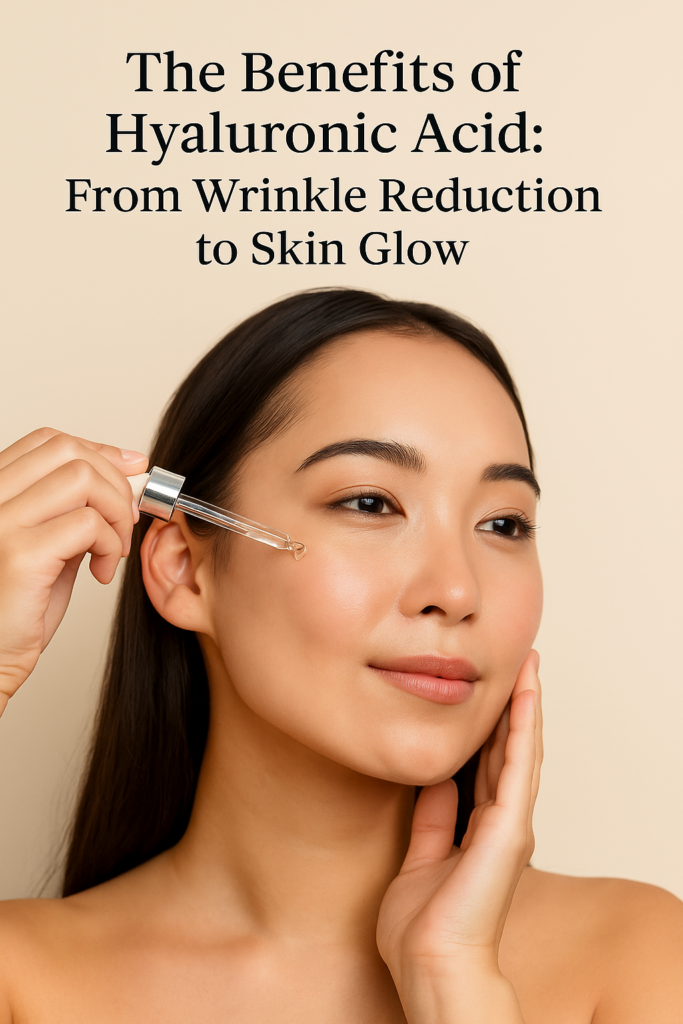Origins in Medical Science
Hyaluronic acid (HA) was first identified in 1934 by scientists Karl Meyer and John Palmer during a meticulous study of the vitreous humor—the clear, gel-like substance inside the human eye. Their work revealed a naturally occurring glycosaminoglycan with a rare combination of traits: remarkable water binding, viscoelasticity, and optical clarity. These properties help preserve ocular shape and transparency while resisting mechanical stress. The finding marked the beginning of HA’s journey through medical science.
Subsequent research mapped HA throughout the body: it is a key component of the extracellular matrix in skin and connective tissues, a major contributor to the lubricating qualities of synovial fluid, and a dynamic participant in wound healing. On a molecular level, HA is a linear polymer of repeating disaccharides (D-glucuronic acid and N-acetyl-D-glucosamine) whose chain length influences behavior—higher molecular weights tend to provide cushioning and hydration, while shorter fragments can participate in signaling related to repair. In surgical ophthalmology, HA solutions (ophthalmic viscoelastic devices) protect delicate tissues, maintain anterior chamber depth, and facilitate lens implantation. In orthopedics, intra-articular HA injections support joint mechanics and comfort by enhancing lubrication and shock absorption in osteoarthritic knees. In wound care, HA-based dressings create a moist, protective microenvironment that supports keratinocyte migration and collagen remodeling.
Importantly, HA’s biocompatibility underpins its safety: the body continuously synthesizes and metabolizes HA, enabling integration with native tissues. Interactions with cell receptors such as CD44 and RHAMM help regulate inflammation and tissue repair, and endogenous enzymes (hyaluronidases) naturally turn over HA, explaining why exogenous HA is ultimately resorbed. Over time, material science advanced HA from simple solutions to stabilized hydrogels, broadening its clinical utility and reliability across specialties.
Transition into Skincare and Cosmetology
By the late 20th century, interest in HA expanded beyond traditional medicine into skincare, cosmetology, and dermatology. Clinicians connected the dots between age-related HA decline in the dermis—driven by reduced synthesis, enzymatic degradation, UV exposure, and oxidative stress—and familiar signs of photoaging: dryness, reduced elasticity, and fine lines.
Topical formulations leveraged HA’s humectant behavior to visibly smooth and soften the stratum corneum. To balance surface hydration with meaningful cosmetic outcomes, brands experimented with molecular-weight ranges and delivery systems—microencapsulation, liposomal carriers, film-forming polymers, and even dissolvable microneedle patches—to enhance residence time and user experience without irritation. Layering strategies (cleanser, essence, HA serum, emollient) became common as consumers sought to “trap” moisture and reduce transepidermal water loss.
Injectable HA then transformed aesthetic practice by working where topicals cannot: within deeper dermal layers and subcutaneous planes. Carefully placed HA can restore contours, soften etched lines, and support skin quality from within. Clinically, HA offered three decisive advantages that accelerated adoption: (1) a favorable safety profile and native biocompatibility, (2) non-permanence with predictable resorption, and (3) adjustability via hyaluronidase when refinement or reversal is required. As training standards rose and anatomical best practices spread, HA became the backbone of modern facial rejuvenation—reliable, predictable, and compatible with combination treatments ranging from neuromodulators to energy-based devices.
A Staple of Modern Aesthetic Treatments
Today, hyaluronic acid sits at the center of non-surgical aesthetic medicine. A wide portfolio of products enables personalization: cross-linked gels tuned by degree of cross-linking and particle architecture; viscosities and rheological profiles (e.g., G′ for lift, cohesivity for tissue integration) matched to indication; and specialized “skin booster” formulations focused on hydration and luminosity rather than volumizing. Clinicians may select firmer gels for jawline definition or cheek projection, medium-lift gels for nasolabial folds, and softer, more elastic gels for dynamic or delicate zones like lips and periorbital areas. Beyond the face, HA also addresses neck creping, décolletage quality, and volume-deficient hands—offering a cohesive, multi-area approach to rejuvenation.
Longevity varies by product, placement, metabolism, and lifestyle, typically ranging from several months to over a year. Results are immediate yet settle over days as edema resolves and the gel integrates with surrounding tissues. Downtime is minimal for most patients, aligning with demand for “lunchtime” procedures. Safety is anchored in sound technique—respecting vascular anatomy, selecting appropriate planes, using cannulas or needles judiciously, and employing conservative volumes with incremental layering. Thoughtful aftercare (gentle hygiene, edema management with cool compresses, short-term activity modifications, and sun protection) supports recovery, while clear follow-up pathways ensure early recognition and management of rare complications. The availability of hyaluronidase and established vascular-occlusion protocols further strengthen the safety net and are standard considerations in well-run clinics.
HA integrates cleanly into comprehensive treatment plans. It pairs with neuromodulators to balance static and dynamic lines, with biostimulatory modalities to support collagen quality, and with energy-based devices (scheduled appropriately) to enhance texture and tone. Maintenance strategies often include conservative touch-ups, skincare supporting barrier function and pigmentation control, and lifestyle guidance to preserve results. Careful patient selection—considering anatomical proportions, skin quality, goals, and medical history—remains central to achieving outcomes that are natural, harmonious, and resilient over time.
Trusted Sources for Professionals
For clinics and licensed practitioners, sourcing matters as much as technique. Product purity, manufacturing standards, documentation (IFU, lot numbers), storage guidance, and reliable distribution directly affect consistency and safety. Portfolios that span multiple rheologies and indications help standardize protocols while allowing individualized plans. Professional support—training resources, responsive customer service, and transparent product data—further contributes to predictable outcomes and clinic efficiency.
One example is To The Beauty https://tothebeauty.com/, a Korea-based provider of aesthetic medical supplies with a curated catalog of dermal fillers, skin boosters, and injection materials for professional use. The selection reflects the strengths of Korea’s advanced biomaterials sector and allows practitioners to match product characteristics to specific treatment goals and techniques. Practical considerations—batch traceability, storage and shipping instructions, accessory compatibility (needles, cannulas), and availability of adjuncts like lidocaine or hyaluronidase—simplify clinic workflows and support consistent patient experiences.
By partnering with reputable suppliers and adhering to evidence-based protocols, clinics can deliver outcomes that align with modern expectations: minimally invasive, customizable, and reversible—hallmarks of hyaluronic acid’s enduring role in aesthetic medicine. If needed, clinics can further refine standards by instituting product evaluation checklists (indication fit, rheology, longevity, reversibility, documentation), maintaining emergency preparedness (hyaluronidase kits, escalation pathways), and scheduling routine training to keep teams current with best practices.

Your Online Personal Shopper + Stylist






Leave a Reply
You must be logged in to post a comment.